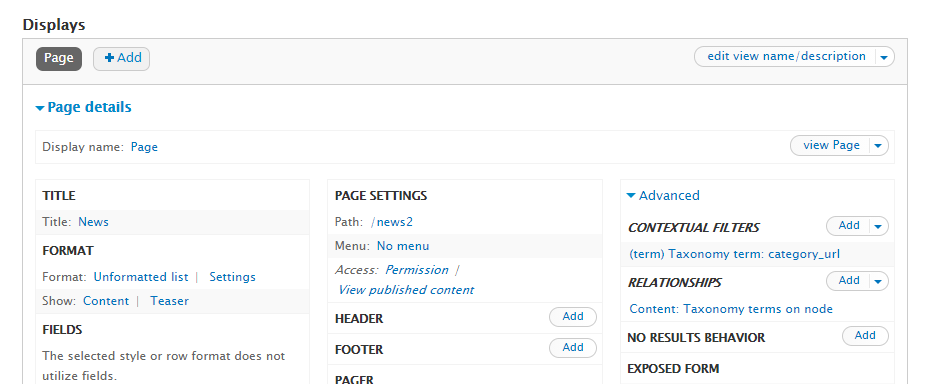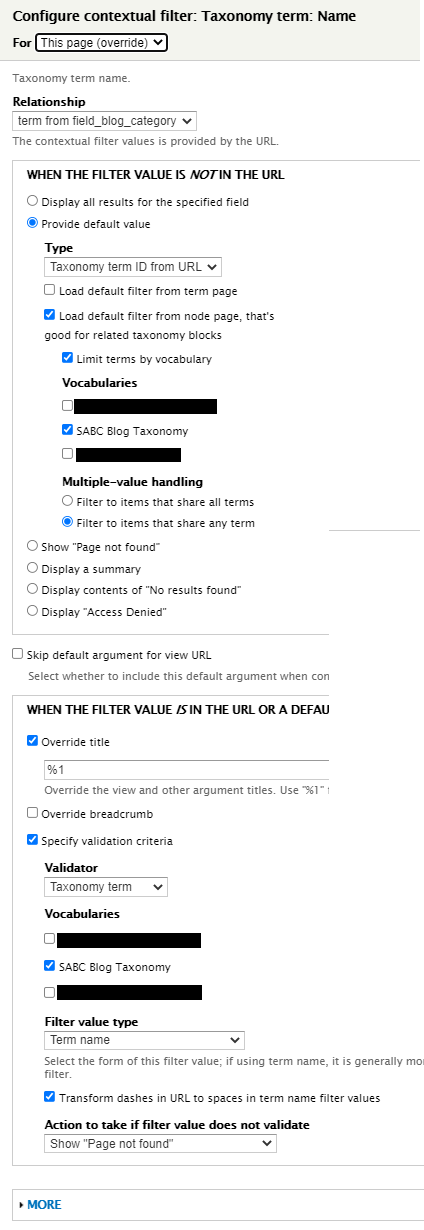I'm working with Drupal 7, and trying to get a view set up that will display blog categories and articles based on their category.
The category is a Taxonomy - Blog Categories - let's assume it's:
- rock-and-roll
- pop
- jazz
- other
I'm hoping for the following path behavior:
/blog/should list all articles./blog/rock-and-roll/should list articles that have the rock-and-roll taxonomy set./blog/non-existant-term/should show page not found/blog/rock-and-roll/real-article-titleshould show the relevant article/blog/rock-and-roll/fake-article-titleshould show page not found
I've tried a ton of different combinations of relationships and contextual filters, but I just can't get it to work. The closest I can get is where all of the 'proper' urls work... I get category lists, or I get article displays... but I also still get a page when I go to a path with either an invalid taxonomy term or an invalid article name.
It seems like it should be something with the Contextual Filter validation stuff... but anything I've tried with like validation based on a taxonomy or whatever just stops anything from working. I no longer get listings or articles properly.
I'm not sure what other information to include - I'm trying to avoid adding any modules (because I've basically been told not to) and I'm trying to avoid making it multiple views.
-------- EDIT --------
I've tried some of the stuff suggested by prkos but I'm not having any more success. I've attached some screenshots of my configs... with a little bit of censored stuff. It probably doesn't matter, but I'm expected to be circumspect. The original URL/Taxonomy I used isn't actually the final stuff, it was just example... so there might be some mismatch there.
So, with these changes in place... now if I go to url/news2/ I get a Page not found. url/news2/all seems to work, but then url/news2/validterm doesn't work. validterm doesn't get any results in the view preview thing either... where it did before.



